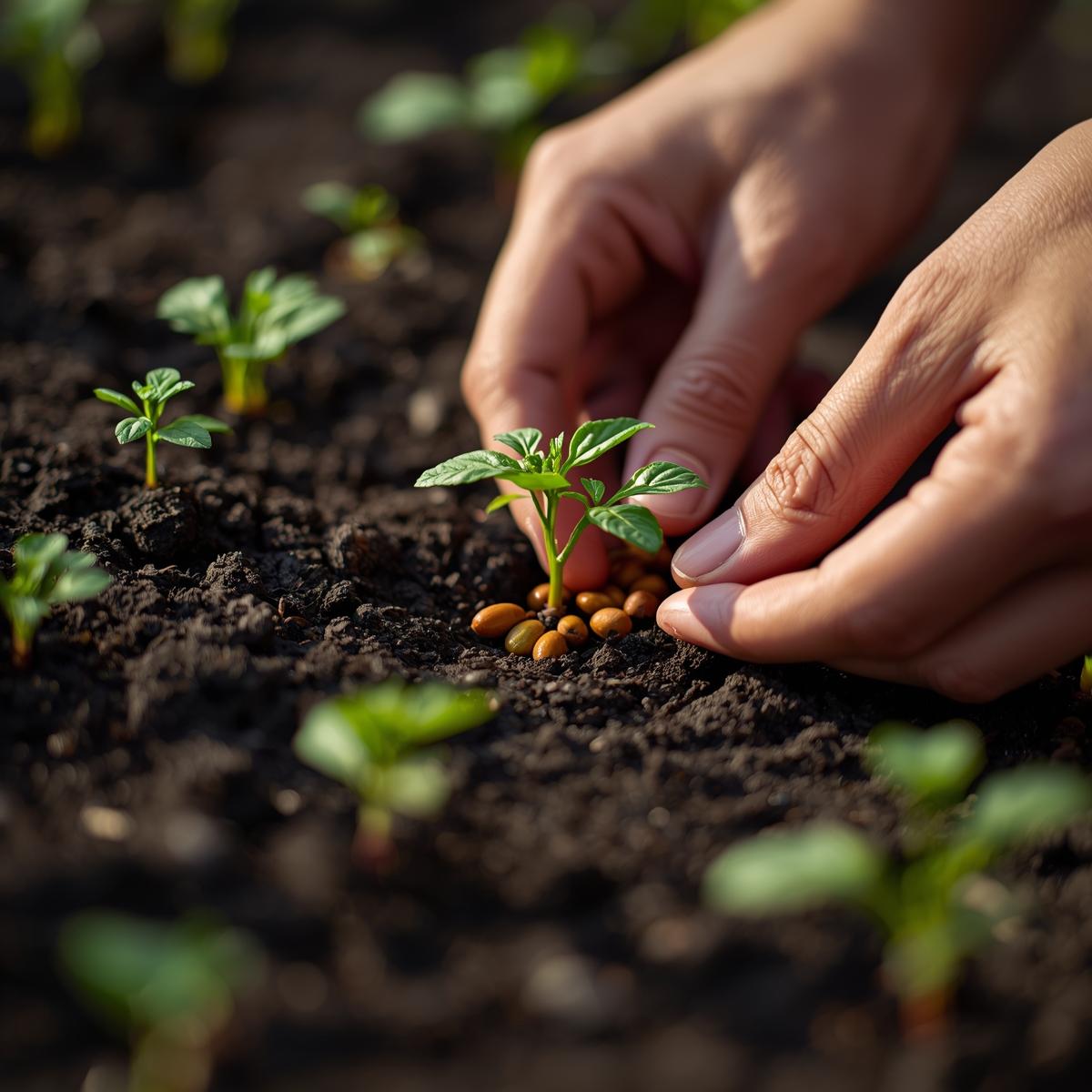Discover the simple secrets to growing vibrant, healthy bell peppers right from seeds — even if you’re a beginner!Bell peppers (also known as sweet peppers or capsicums) are one of the most colorful and rewarding plants to grow in your home garden. Whether you love them in salads, stir-fries, or stuffed with delicious fillings, growing your own peppers from seed is surprisingly easy — and yes, totally unbelievable how fast they can thrive with the right care!This complete guide will show you how to plant bell pepper seeds successfully, from seed-starting to transplanting, so you can enjoy a lush harvest of red, yellow, green, or even purple peppers. 🌶️🌿 Why Grow Bell Peppers from Seeds?Starting bell peppers from seeds gives you:✅ More variety — you can choose unique colors and heirloom types not found in stores.✅ Cost savings — one packet of seeds can produce many plants!✅ Stronger plants — they adapt better to your local environment.✅ The joy of growing from scratch — it’s incredibly satisfying to watch seeds sprout and flourish.🪴 Fun fact: Bell peppers are the only members of the pepper family that aren’t spicy — they’re all sweetness and crunch!🧂 What You’ll NeedBefore you begin your bell pepper seed planting adventure, gather these essentials:Bell pepper seeds (choose your favorite variety: red, yellow, green, or orange)Seed-starting tray or small potsSeed-starting mix (light and well-draining, not heavy garden soil)Spray bottle (for gentle watering)Plastic wrap or humidity domeGrow lights or a sunny windowLabels or markers (to track varieties)🌱 Step-by-Step: How to Plant Bell Pepper SeedsStep 1: Start IndoorsBell pepper seeds need warmth to germinate, so it’s best to start them indoors 8–10 weeks before the last frost date in your area.🌡️ Ideal soil temperature: around 75–85°F (24–29°C) for best germination results.Step 2: Fill Your ContainersFill your seed trays or pots with seed-starting mix. Lightly moisten the mix before sowing — it should be damp but not soggy.Step 3: Sow the SeedsPlant 2–3 seeds per cell or pot, about ¼ inch (6 mm) deep.Gently cover them with a thin layer of soil mix.Mist the surface with water to keep it moist.Cover the tray with plastic wrap or a humidity dome to retain warmth and moisture — this helps the seeds sprout faster.Step 4: Provide Warmth and LightBell pepper seeds love warmth! Place the trays in a warm, bright spot or use a seed heat mat if your home is cool.Once seedlings emerge (usually in 7–14 days), remove the cover and move them to a sunny windowsill or under grow lights for 14–16 hours per day.☀️ Pro Tip: Keep the lights about 2–3 inches above the seedlings so they don’t stretch too tall.Step 5: Thin and Strengthen the SeedlingsWhen the seedlings have grown two sets of true leaves, thin them out — keeping the strongest plant in each pot.To help them grow sturdy:Gently brush your hand over them daily, orUse a small fan for a few hours to simulate wind movement.This strengthens the stems and prepares them for outdoor life.Step 6: Transplanting Outdoors🌦️ When to TransplantTransplant your bell pepper seedlings 2–3 weeks after the last frost, when:Daytime temperatures stay above 70°F (21°C)Night temperatures don’t drop below 55°F (13°C)🌱 How to TransplantHarden off seedlings for 7–10 days — gradually expose them to outdoor conditions.Choose a sunny location with well-draining soil.Mix compost or aged manure into the soil for nutrients.Space plants 18–24 inches apart, with 24–30 inches between rows.Water thoroughly after planting.🌞 Hack: Add a layer of mulch to retain moisture and keep the roots cool.💧 Watering and Care TipsWater deeply once or twice a week — don’t overwater!Keep soil consistently moist, not soggy.Feed every 2–3 weeks with a balanced liquid fertilizer once flowers appear.Remove any early blossoms until plants are about 12 inches tall — this helps them grow stronger.🌿 Garden Hack: Bell peppers love consistent care — irregular watering can cause blossom end rot.🌼 Encouraging More PeppersIf you want bigger and better yields, try these unbelievable tricks:Prune lower leaves to improve airflow and prevent pests.Stake or cage taller plants to keep them upright.Companion plant with basil or marigolds — they deter insects and attract pollinators.Harvest regularly — picking peppers often encourages more fruit growth.💚 Fun fact: Green peppers are simply unripe red or yellow peppers! The longer you let them mature, the sweeter they get.🐝 Common Problems & Easy Fixes🥀 Leaves turning yellow?Likely overwatering or poor drainage — let soil dry slightly before watering again.🐛 Pests like aphids or whiteflies?Spray with mild soapy water or neem oil once a week.🍂 No flowers or fruit?Too cold or not enough sunlight — make sure they’re getting at least 6–8 hours of full sun daily.🫑 Harvest Time!Bell peppers are ready to harvest about 60–90 days after transplanting, depending on the variety.Green peppers can be picked early for a crisp flavor.Leave them longer on the vine for red, yellow, or orange sweetness.Use scissors or garden shears to cut the peppers — don’t pull them off the plant, as this can damage the stem.🌟 Conclusion: Grow Peppers Like a Pro!And there you have it — the unbelievable way to plant bell pepper seeds and grow your own vibrant harvest! With just a little patience, warmth, and sunlight, you can transform tiny seeds into lush, productive pepper plants that brighten both your garden and your kitchen.So grab your seeds, warm up your soil, and start planting — because there’s nothing quite like the joy of harvesting your own colorful bell peppers! 🌈🫑🌿SEO Keywords: how to plant bell pepper seeds, growing bell peppers from seed, bell pepper gardening tips, start peppers indoors, when to transplant bell peppers, easy vegetable gardening, growing sweet peppers.

